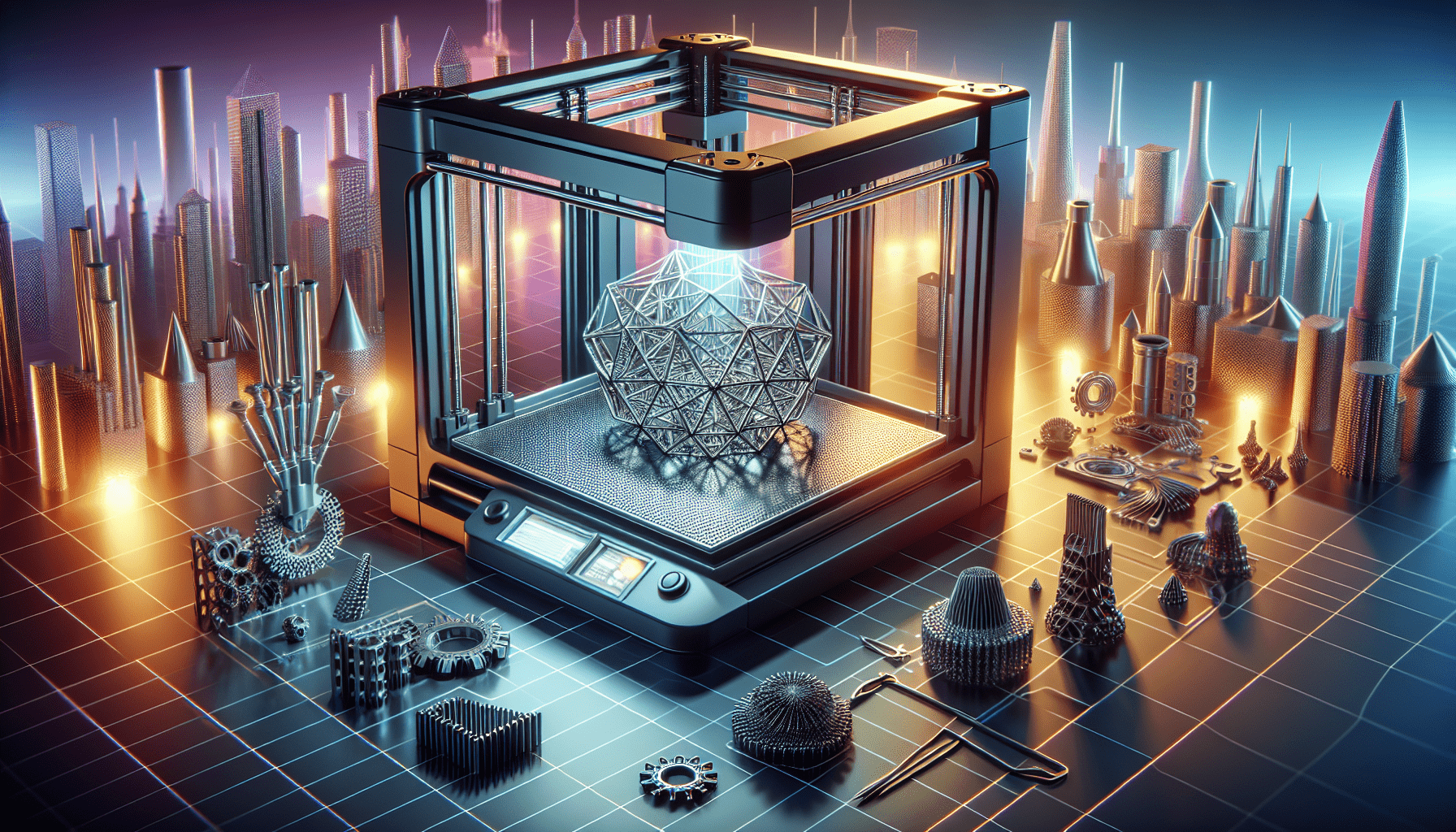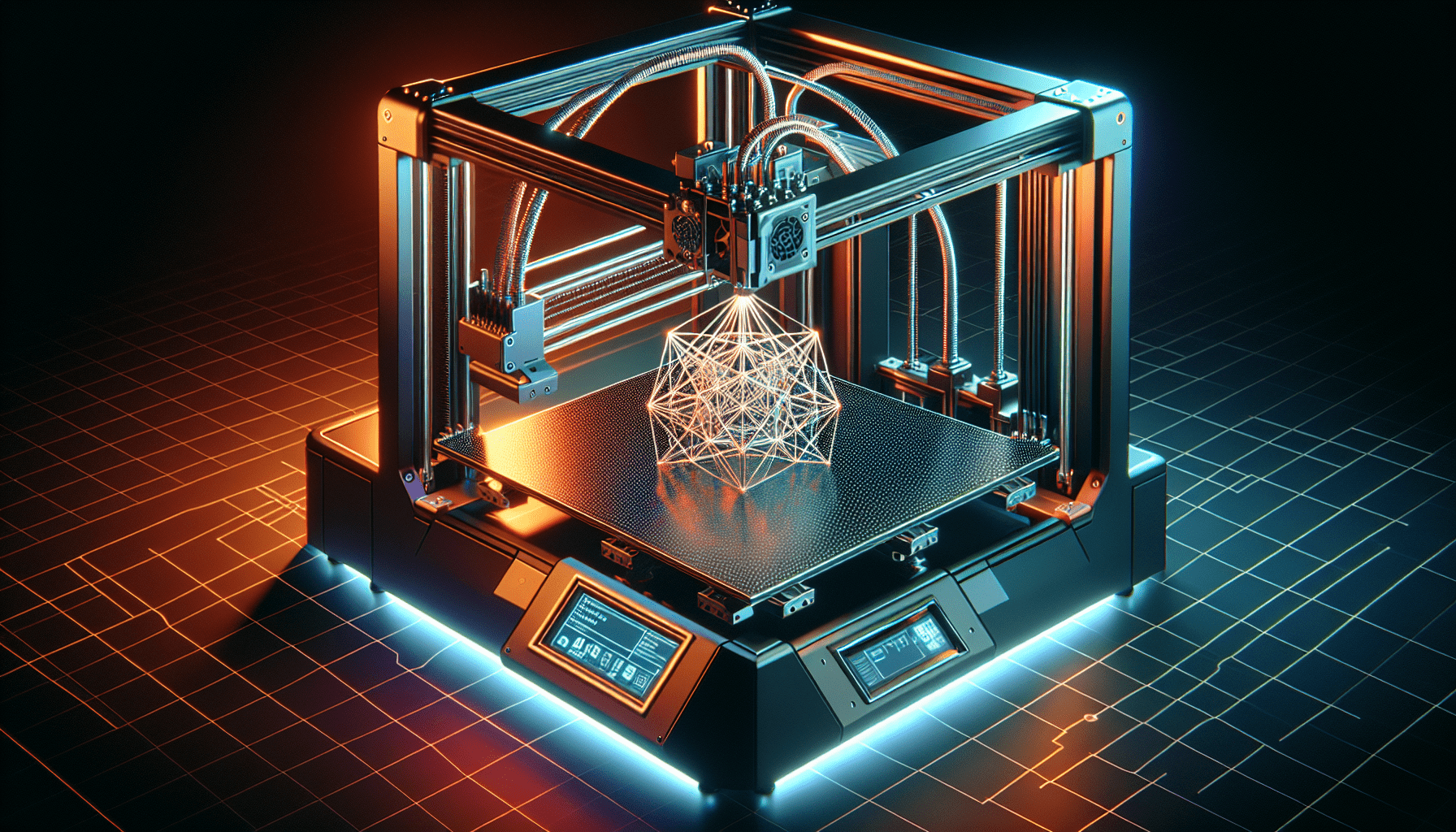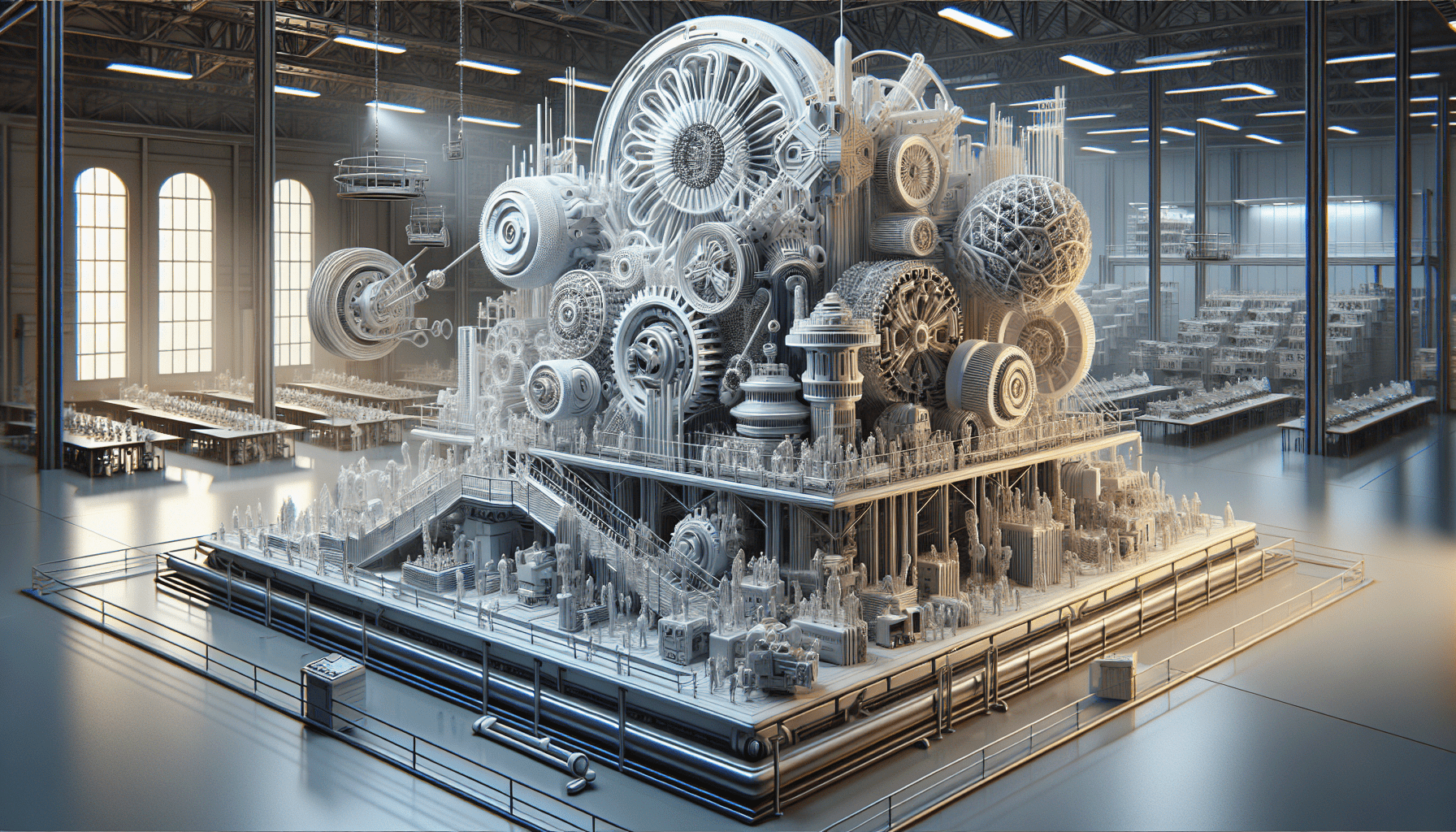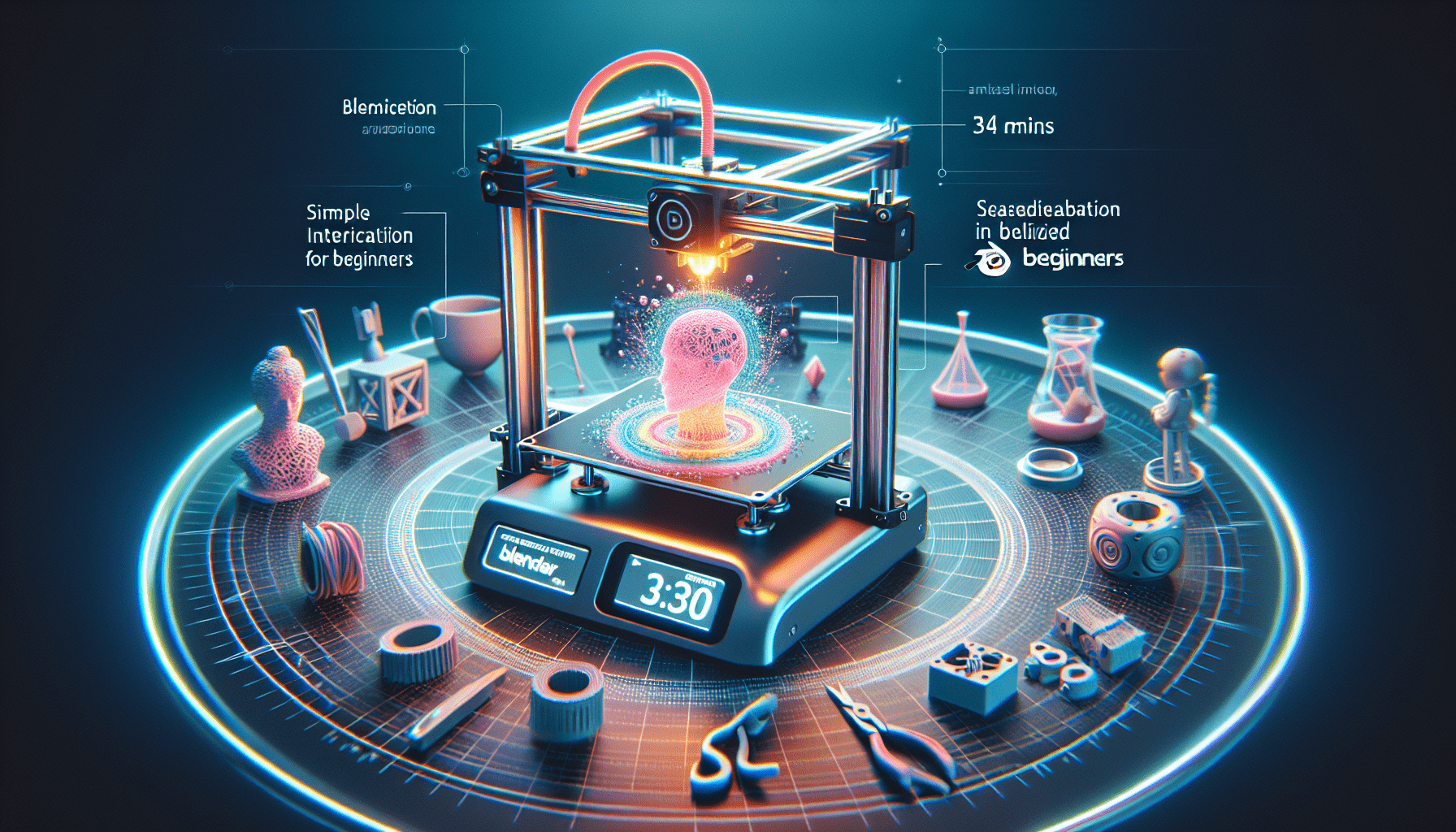Sovol SV08 Core-XY 3D Printer Voron 2.4 Open Source, 700mm/s High Speed 3D Printers with 300℃ Clog-Free Hotend & Camera, Auto Leveling with 4 Independent Z Motors, Large Print Size 13.8x13.8x13.6in
$569.00 (as of May 29, 2025 10:56 GMT +00:00 - More infoProduct prices and availability are accurate as of the date/time indicated and are subject to change. Any price and availability information displayed on [relevant Amazon Site(s), as applicable] at the time of purchase will apply to the purchase of this product.)In exploring the distinctions between 3D printing and additive manufacturing, you will uncover that these terms are frequently used interchangeably within the industry. Although both concepts involve the layer-by-layer construction of parts, 3D printing is more often employed as a colloquial term, while additive manufacturing encompasses a broader, technical scope.
By examining the nuances between these terms, you will gain insight into the historical and practical contexts that have shaped their usage. Understanding the subtle differences can enhance your comprehension of how these technologies revolutionize modern production processes.
Definition and Terminology
What is 3D Printing?
3D printing, also known formally as additive manufacturing, fundamentally involves creating a three-dimensional object by successively adding material layer by layer. This technology allows for the precise construction of complex geometries that would be difficult or impossible to achieve using traditional manufacturing methods. The process originates from a digital 3D model, which is sliced into thin horizontal layers, each guiding the printer on how to add subsequent material.
What is Additive Manufacturing?
Additive manufacturing is the industrial term for 3D printing technologies. This encompasses various processes and techniques used to create objects by adding material. Unlike traditional subtractive manufacturing methods, which remove material from a block, additive manufacturing builds objects from the ground up, layer by layer. This term is widely used in professional and industrial contexts to emphasize the manufacturing aspect and distinguish it from more rudimentary 3D printing applications.
Usage of Terms in Industry vs. Public
In the public vernacular, “3D printing” has become the catch-all term for these technologies. It is a more approachable and recognizable term, especially for hobbyists and the general public. In contrast, within the industry, the term “additive manufacturing” (or simply “additive”) is preferred among professionals and engineers. It connotes a higher degree of precision and industrial applicability, suitable for serious production environments and professional use cases.
Historical Context
Origins of 3D Printing
The origins of 3D printing trace back to the early 1980s. The first documented attempt was by Dr. Hideo Kodama of Nagoya Municipal Industrial Research Institute, who developed a functional rapid-prototyping system. Following this, Chuck Hull invented stereolithography (SLA) in 1983, which was the first recognized patent in 3D printing. This marked the beginning of the incorporation of digital data in creating physical objects through layer-by-layer construction.
Origins of Additive Manufacturing
The concept of additive manufacturing was propelled into the industrial spotlight with the invention of selective laser sintering (SLS) by Dr. Carl Deckard in the mid-1980s. This technology, alongside other methods like fused deposition modeling (FDM), introduced the capability of producing functional prototypes and end-use products, necessitating a term that reflected these advanced industrial capabilities—hence the term “additive manufacturing.”
Evolution of Terminology Over Time
Over the years, the terminology has evolved significantly. While “3D printing” gained popularity due to its relatable and descriptive nature, “additive manufacturing” became the technical standard in professional and industrial contexts. This evolution reflects the broadening scope and sophistication of the technology, from early prototyping to complex, high-value manufacturing applications.

Find 3D Printing Accessories Here
Technical Differences
Basic Principles of 3D Printing
3D printing operates on a straightforward principle of adding material layer by layer based on a digital model. Each layer corresponds to a cross-sectional slice of the final object. Various methods exist within 3D printing, including SLA, FDM, SLS, and binder jetting, each employing different materials and techniques to achieve the same fundamental goal of constructing a three-dimensional object.
Basic Principles of Additive Manufacturing
Additive manufacturing shares the basic principles of 3D printing but extends into more complex and varied processes. These advanced techniques often require high-end equipment and materials, designed for creating end-use products rather than mere prototypes. Methods such as direct metal laser sintering (DMLS) and electron beam melting (EBM) exemplify the high precision and industrial focus of additive manufacturing.
Comparison: Additive vs. Subtractive Manufacturing
The central difference between additive manufacturing and subtractive manufacturing lies in their approach to material usage. Subtractive manufacturing methods, like milling and turning, involve removing material from a solid block to achieve the desired shape. Conversely, additive manufacturing builds objects from the ground up, adding material precisely where needed. This leads to potential material savings and the ability to create intricate geometries not feasible with subtractive methods.
Applications and Use Cases
3D Printing in Prototyping
3D printing has revolutionized the prototyping process, allowing designers and engineers to rapidly iterate on designs. It enables the creation of physical prototypes directly from digital files, significantly reducing the time and cost involved in traditional prototyping methods. This has facilitated innovation and creativity in numerous fields, including product design, architecture, and engineering.
Additive Manufacturing in Mass Production
Additive manufacturing shines in applications requiring complex geometries, customization, and lower production volumes. It is increasingly used for mass production in industries such as aerospace, automotive, and medical devices. These fields benefit from additive manufacturing’s ability to produce lightweight, structurally optimized parts that meet stringent performance criteria.
Niche Applications of Both Technologies
Both 3D printing and additive manufacturing find niche applications in fields like bioprinting, where living tissues are constructed for medical research and organ transplantation. Another niche area is in the creation of customized consumer products, such as personalized footwear or bespoke jewelry, leveraging the low-cost customization potential of 3D printing.

Materials and Methods
Materials Used in 3D Printing
The materials used in 3D printing are diverse, ranging from plastics such as PLA and ABS, to resins and composites. These materials are chosen based on the specific requirements of the prototype in terms of strength, flexibility, and finish. Innovative materials, including biodegradable plastics and conductive polymers, are expanding the application range of 3D printing.
Materials Used in Additive Manufacturing
In additive manufacturing, the material selection is more extensive and includes metals such as aluminum, titanium, and stainless steel. Advanced polymers and composites are also used, often tailored to specific industrial applications. The focus is on materials that can endure the rigors of real-world use, such as high temperatures, mechanical stress, and chemical exposure.
Common Technologies and Machines
In 3D printing, popular technologies include FDM, SLA, and SLS, each utilizing different material deposition methods. Machines range from desktop 3D printers suitable for hobbyists to professional-grade equipment. Additive manufacturing employs more sophisticated technologies like DMLS, EBM, and multi-jet fusion (MJF). These machines are designed for high precision and high throughput, suitable for industrial applications.
Cost and Efficiency
Cost Considerations
The cost of 3D printing has decreased over the years, making it accessible to both hobbyists and small businesses. However, the cost can vary significantly depending on the material and complexity of the print. Additive manufacturing, while more expensive upfront due to advanced machinery and materials, offers cost savings in terms of reduced material waste and the ability to produce complex parts without the need for expensive tooling.
Efficiency and Speed
Speed and efficiency can vary widely between different 3D printing and additive manufacturing methods. While 3D printing is generally slower and more suited for low-volume production and prototyping, advancements are continuously improving print speeds. Additive manufacturing technologies, particularly those used in industrial settings, are optimized for higher throughput and efficiency, making them more suitable for mass production.
Scalability Potential
Scalability is one of the primary challenges in both 3D printing and additive manufacturing. While 3D printing excels in small-scale, customizable projects, scaling up production can be costly and time-consuming. Additive manufacturing offers better scalability in industrial applications, particularly with advances in automation, which enable the integration of these technologies into larger production lines.
Industries Benefiting
Automotive Industry
The automotive industry has been a major beneficiary of 3D printing and additive manufacturing. These technologies are used for rapid prototyping of parts, custom tooling, and even the production of final components. The ability to create lightweight, complex structures helps in reducing the overall weight of vehicles, improving fuel efficiency, and reducing emissions.
Healthcare and Bioprinting
In healthcare, 3D printing and additive manufacturing have opened new frontiers in medical device manufacturing, prosthetics, and even bioprinting. Custom implants, surgical guides, and personalized prosthetics are just a few examples of how these technologies are revolutionizing patient care. Bioprinting, which involves printing tissues and organs, holds promise for future medical treatments and transplants.
Consumer Goods and Electronics
In consumer goods and electronics, 3D printing allows for the creation of custom products tailored to individual preferences. Items such as personalized headphones, custom-fit footwear, and bespoke furniture are examples of how 3D printing caters to consumer-specific needs. In electronics, additive manufacturing enables the production of complex circuitry and custom housings, pushing the boundaries of design and functionality.
Quality and Precision
Surface Finish and Tolerances
The surface finish and tolerances achievable with 3D printing can vary based on the technology used. High-resolution methods like SLA can produce smooth surfaces and fine details, while FDM prints might require post-processing for a better finish. Additive manufacturing typically achieves higher precision and better surface quality due to the use of advanced materials and processes, making it suitable for end-use parts.
Consistency and Repeatability
Consistency and repeatability are crucial in manufacturing, and both 3D printing and additive manufacturing have made significant strides in this regard. Industrial-grade machines and standardized materials have improved the reliability of these technologies. However, additive manufacturing often leads in consistency and repeatability, making it more viable for production of critical components.
Inspection and Quality Control
Inspection and quality control are integral to maintaining the standards required in manufacturing. Techniques such as non-destructive testing, optical and laser scanning, and automated inspection systems are employed to ensure the accuracy and integrity of parts produced via 3D printing and additive manufacturing. These processes help in identifying defects and ensuring that parts meet the required specifications.
Future Trends
Innovations in 3D Printing
The future of 3D printing holds numerous innovations, such as multi-material printing, faster and more precise printers, and the incorporation of advanced materials like graphene and carbon fiber composites. There is also a growing interest in portable and compact 3D printers, which could democratize access to this technology even further.
Advancements in Additive Manufacturing
Advances in additive manufacturing are focusing on improving scalability, speed, and material diversity. Innovations like hybrid manufacturing, which combines additive and subtractive methods, and advancements in metal printing technologies are pushing the boundaries of what can be achieved. Furthermore, automated post-processing and integration into existing manufacturing ecosystems are expected to enhance the viability of additive manufacturing for mass production.
Integration with Other Technologies
The integration of 3D printing and additive manufacturing with other burgeoning technologies such as artificial intelligence, the Internet of Things (IoT), and robotics is set to revolutionize the manufacturing landscape. AI-driven design optimization, IoT-based monitoring, and robotic automation can work synergistically with additive manufacturing to create smart, efficient, and adaptable manufacturing systems.
Conclusion
Summary of Key Points
In summary, 3D printing and additive manufacturing, while often used interchangeably, have distinct connotations in different contexts. 3D printing is the colloquial term familiar to the general public and hobbyists, whereas additive manufacturing is the industrially preferred term, emphasizing precision and manufacturing capabilities. Both technologies have evolved significantly since their inception and now offer a wide range of materials and methods suitable for diverse applications.
Final Thoughts on Terminology and Practice
Understanding the subtle differences between 3D printing and additive manufacturing can help in appreciating the breadth of these technologies’ applications and capabilities. While the terminology may differ, the underlying principles remain constant—creating objects layer by layer from digital models. These technologies are revolutionizing various industries by enabling rapid prototyping, mass customization, and complex geometrical constructions that were previously unattainable.
Future Outlook
The future of 3D printing and additive manufacturing is bright, with continuous advancements enhancing their speed, precision, and material range. As they integrate more deeply with AI, IoT, and automation technologies, their impact on manufacturing will only grow more profound. These innovations will make manufacturing more adaptable, efficient, and capable of producing highly personalized and complex items, paving the way for a new era in industrial production.
Maintain Your 3D Printer with these Tools








